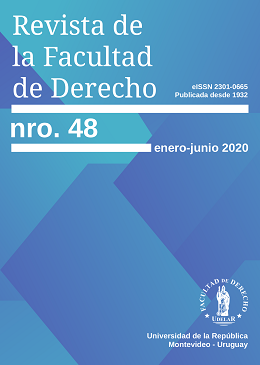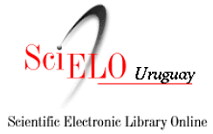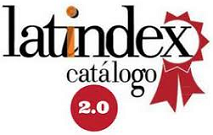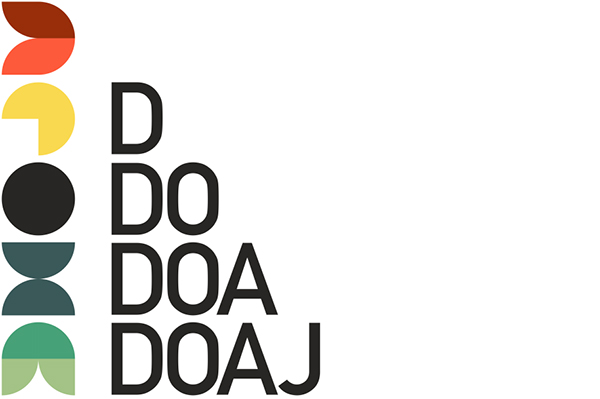Regulación internacional de los recursos genéticos:
una genealogía crítica
Resumen
Este artículo presenta un mapeo genealógico de la regulación internacional del acceso a los recursos genéticos. A través del rastreo de los antecedentes de la actual regulación se pretende analizar críticamente su paulatina transformación en objeto de apropiación, en mercancía. Se procura mostrar que el proceso de mercantilización no es inocuo, sino que tiene una influencia decisiva en la gestión de tales recursos en tanto fundamentales para la alimentación y la vida. Se aborda en particular la transformación discursiva y regulatoria que en la materia presenta la Organización para la Alimentación y la Agricultura (FAO), como principal institución internacional de gestión de las problemáticas transnacionales relacionadas con la alimentación y la agricultura. A su vez se analiza el rol de la Organización Mundial del Comercio (OMC) en la consolidación de la normativa vigente, en especial su influencia en la gestación del Acuerdo sobre los Aspectos de la Propiedad Intelectual relacionados con el Comercio (ADPIC). Finalmente se revisa la agenda de la regulación en la materia, particularmente en relación con la garantía de los derechos de los agricultores y la promoción del acceso común.
Descargas
Citas
Aguilar, G. (2001). Access to genetic resources and protection of traditional knowledge in the territories of indigenous peoples. Environmental Science & Policy, 4(4–5), 241–256. Retrieved from http://ac.elscdn.com/S146290110 1000284/1s2.0S1462901101000284main.pdf?_tid=9839f8f0630611e3 a9d300000aab0f6c&acdnat=1386836756_6be9d98453530a129b3abfe280eb faae
Astudillo Gómez, F. (1997). Regulación del acceso a los recursos genéticos y propiedad intelectual. In C. M. Correa (Ed.), Biotecnología y Derecho (pp. 13–60). Buenos Aires: CiudadArgentina.
Barth, R., Bilz, M., Brauner, R., Clausen, J., Dross, M., Heineke, C., Wunderlich, U. (2004). Agrobiodiversität entwickeln! Handlungsstrategien für eine nachhaltige Tier und Pflanzenzucht.: Kapitel 12: Fazit. Kapitel 12: Fazit. Berlin. Retrieved from http://www.agrobiodiversitaet.net/download/12Fazit 1.pdf
Barton, T. (2004). Der “Ordre public” als Grenze der Biopatentierung: Konkretisierung und Funktion der Vorbehalte zum “ordre public” und zum menschlichen Körper in der EGBiopatentRichtlinie einschliesslich der Umsetzung ins deutsche Recht. Berlin: Erich Schmidt.
Bonet de Viola, A. M. (2019). De la garantía de la identidad a la acogida de las diferencias. Por una Constitución en constante reforma. A 25 Años de La Reforma de 1994. Revista de Derecho Público Rubinzal Culzoni, 1–20.
Bonet de Viola, A. M. (2018). La propiedad intelectual como sistema asignativo moderno. Una genealogía crítica de las normas vigentes de acceso al conocimiento. Revista de la Facultad de Derecho, (45), 1–44. https://doi.org/10.22187/rfd2018n45a2
Bonet de Viola, A. M. (2017a). La “despropiación” de la naturaleza. Repensar las normas de acceso a los bienes a partir de Laudato si. Rivista Italiana Di Filosofia e Teologia, 31(2), 253–269.
Bonet de Viola, A. M. (2017b). Repensar el sistema apropiativo. Aportes desde el concepto de “destino común de los bienes”. In A. M. Bonet de Viola y F. I. Viola (Eds.), Repensar el desarrollo. Aportes en torno a Laudato Si (pp. 1–11). Buenos Aires: Grama.
Bonet de Viola, A. M. (2016). Die Demokratisierung des W issens. Kollisionen zwischen dem Recht auf Nahrung und dem gewerblichen Schutz in der Biotechnologie. Hamburg: Dr. Kovac.
Cartwright Traylor, J. (1988). FAO and the right to food. In A. Eide, W. B. Eide, S. Goonatilake, J. Gussow, y Omawale (Eds.), Food as a human right (2nd ed., pp. 187–218). Tokyo, Japan: United Nations University.
CIPR Commission on Intellectual Property Rights. (2002). Integrating Intellectual Property Rights and Development Policy (U.C. on I. P. Rights, Ed.). Retrieved from http://www.iprcommission.org/papers/pdfs/Multi_Lingual_ Documents/Multi_Lingual_Exec_Summary/ExeSummarySpanish.pdf
Council for TradeRelated Aspects of Intellectual Property Rights, W. T. O. (2006a). The TRIPS Agreement and Convention on Biological Diversity: IP/C/W/368/Rev.1. IP/C/W/368/Rev.1. Retrieved from http://www.wto.org/ english/tratop_e/trips_e/ipcw368_e.pdf
Council for TradeRelated Aspects of Intellectual Property Rights, W. T. O. (2006b). Review of the provisions of article 27.3(B): Summary of issues raised and points made. Summary of Issues Raised and Points Made. Retrieved from http://www.wto.org/english/tratop_e/trips_e/ipcw369r1.pdf
Correa, C. M. (2000a). Integrating public health concerns into patent legislation in developing countries. Geneva, Switzerland: The South Centre.
Correa, C. M. (2000b). Intellectual property rights, the WTO, and developing countries: The TRIPS Agreement and policy options. In The TRIPS Agreement and policy options. London: Zed Books
Correa, C. M., Barton, J. H., Alexander, D., Mashelkar, R., Samuels, G. & Thomas, S. (2005). Propiedad Intelectual y Políticas de Desarrollo: Informe de la Comisión sobre Derechos de Propiedad Intelectual “Integrando los derechos de Propiedad Intelectual y la Política de Desarrollo” (C. M. Correa, Ed.). Informe de La Comisión Sobre Derechos de Propiedad Intelectual “Integrando Los Derechos de Propiedad Intelectual y La Política de Desarrollo”. Retrieved from http://www.iprcommission.org/papers/pdfs/ Multi_Lingual_Documents/Multi_Lingual_Main_Report/DFID_Main_Repor t_Spanish_RR.pdf
Council for TradeRelated Aspects of Intellectual Property Rights, W. T. O. (2003). Taking forward the review of article 27.3(b) of the TRIPSAgreement: IP/C/W/404. IP/C/W/404.
Cullet, P. (2004a). Food security and intellectual property rights. In Les Cahiers du Ribios. Geneve: RIBios. Retrieved from http://www.ribios.org/fr/documents/ docs/Brochurespdf/Brochure6FoodsecDPI.pdf
Cullet, P. (2004b). Intellectual Property Rights and the Right to Food in the South. Journal of World Intellectual Property, 7(3), 261. Retrieved from http://ielrc.org/content/a0403.pdf
Delgado Ramos, G. C. (2001). La biopiratería y la propiedad intelectual como fundamento del desarrollo biotecnológico. Problemas Del Desarrollo. Revista Latinoamericana de Economía, 32(126), 175–209. https://doi.org/10.22201/ iiec.20078951e.2001.126.7400
Espinosa, F. (2004). Recursos genéticos conocimientos y propiedad tradicionales intelectual.Iconos. Revista de Ciencias Sociales, (19), 13–20.
EsquinasAlcázar, J. (1997). La aplicación de los derechos del agricultor. In C. M. Correa (Ed.), Biotecnología y Derecho (pp. 273–298). Buenos Aires: Ciudad Argentina.
FAO (Ed.). (1996). Report on the State on the World´s Plant Genetic Resources for Food and Agriculture: prepared for the International Technical Conference on Plant Genetic Resourcesz, Leipzig. Prepared for the International Technical Conference on Plant Genetic Resourcesz, Leipzig. Roma. Retrieved from http://www.fao.org/fileadmin/templates/agphome/documents/PGR/SoW1/So WshortE.pdf
FischerLescano, A. y Teubner, G. (2006). RegimeKollisionen: Zur Fragmentierung des globalen Rechts (1. Aufl). Frankfurt am Main: Suhrkamp.
Fricke, C. (2011). Intellectual Property versus soziale Interessen von Entwicklungsländern: Das Patentrecht und seine Auswirkung auf die Ernährungssicherheit. In Das Patentrecht und seine Auswirkung auf die Ernährungssicherheit. Darmstadt: Sofia.
Geneva Academy of International Humanitarian Law and Human Rights (Ed.). (2015). Negotiation of a United Nations Declaration on the Rights of Peasants and Other People Working in Rural Areas. GAIHLHR: Geneva.
Godt, C. (2007). Eigentum an Information: Patentschutz und allgemeine Eigentumstheorie am Beispiel genetischer Information. Tübingen: Mohr Siebeck.
Goebel, B. (2001). Pflanzenpatente und Sortenschutzrechte im Weltmarkt: Zugleich ein Beitrag zur Revision von Art. 27 Abs. 3 b, TRIPSÜbereinkommen. In Zugleich ein Beitrag zur Revision von Art. 27 Abs. 3 b, TRIPSÜbereinkommen. Berlin: Duncker und Humblot.
Golay, C. (2013). Legal reflections on the rights of peasants and other people. Retrieved from http://www.ohchr.org/Documents/HRBodies/HRCouncil/WG Pleasants/Golay.pdf
GóngoraMera, M. y Motta, R. (2014). El derecho internacional y la mercantilización biohegemónica de la naturaleza: la diseminación normativa de la propiedad intelectual sobre semillas en Colombia y Argentina. In B. Göbel, M. GóngoraMera, & A. Ulloa (Eds.), Desigualdades socioambientales en América Latina. Bogotá: Iberoamerikanisches Institüt; Universidad Nacional de Colombia.
Grajal, A. (1999). Régimen de acceso a recursos genéticos impone limitaciones a la investigación en biodiversidad en los países andinos. Interciencia, 24(1), 63–69.
Gudynas, E. (2003). El impacto de la mercantilización de la Naturaleza en la investigación y la sustentabilidad. In Simposio Internacional “Prioridades de Investigación Científica sobre Recursos Naturales Renovables para el Desarrollo Sostenible” (pp. 147–155).
Hahn, A. von. (2004). Traditionelles W issen indigener und lokaler Gemeinschaften zwischen geistigen Eigentumsrechten und der “public domain”. Berlin; Heidelberg: Springer.
Hammer, K. (Ed.) (1998). Agrobiodiversität und pflanzengenetischen Ressourcen: Herausforderung und Lösungansatz. Bonn: Zentralstelle für Agrardokumentation und information (ZADI). Retrieved from http://www.genres.de/fileadmin/SITE_GENRES/downloads/schriftenreihe/Ba nd10_Gesamt.pdf
Hardin, G. (1968). The Tragedy of the Commons. The populations problem has no tecnical solution; it requires a fundamental extesion in morality. Science, 162(June), 1243–1248. https://doi.org/10.1126/science.162.3859.1243
Haugen, H. M. (2007a). Patent Rights and Human Rights: Exploring their Relationships. The Journal of World Intellectual Property, 10(2), 97–124. https://doi.org/10.1111/j.17471796.2007.00316.x
Haugen, H. M. (2007b). The Nature of Social Human Rights Treaties and StandardSetting WTO Treaties: A Queston of Hierarchy? Nordic Journal of International Law, 76, 435–464. Retrieved from http://brage.bibsys.no/diakon/bitstream/URN:NBN:nobibsys_brage_14188 /1/The nature of social human right.pdf?origin=publication_detail
Haugen, H. M. (2007c). The right to food and the TRIPS Agreement: W ith a particular emphasis on developing countries” measures for food production and distribution. Leiden: Martinus Nijhoff Publishers
Haugen, H. M. (2009). Human Rights and TRIPS Exclusion and Exception Provisions. The Journal of World Intellectual Property, 11(5/6), 345–374. https://doi.org/10.1111/j.17471796.2008.00346.x
Heineke, C. (2008). Zwischen Enteingnung und Entwicklung: Zur Transformation des Biopirateriebegriffs. Kritische Justiz, 41(3), 347–352. Retrieved from http://www.kj.nomos.de/fileadmin/kj/doc/2008/20083Heineke_S_347.pdf
Helfer, L. R. (2005). Using intellectual property rights to preserve the global genetic commons: The International Treaty on Plant Genetic Ressources for Food and Agriculture. In K. E. Maskus y J. H. Reichman (Eds.), International Public Goods and Transfer of Technology under a globalized Intellectual Property Regime (pp. 217–224). Cambridge: Cambridge University Press.
Hildyard, N. (1991). An Open Letter to Edouard Saouma, DirectorGeneral of the Food and Agriculture Organisation of United Nations. The Ecologist, 21, 43–46.
Jördens, R. (2005). Progress of plant variety protection based on the International Convention for the Protection of New Varieties of Plants (UPOV Convention). World Patent Information, 27(3), 232–243. https://doi.org/ 10.1016/j.wpi.2005.03.004
Kaiser, G. (2006). Biopiraterie Der neue Kolonialismus. Bläter Für Deutsche Und Internationale Politik, 10. Retrieved from file:///C:/Users/Anita/Downloads/ kais0610.pdf
Kewitz, P. (2008). Der gemeinschaftsrechtliche Patentschutz für biotechnologische Erfindungen: Die RL 98/44/EG im System des europäischen Erfindungsschutzes. Die RL 98/44/EG im System des europäischen Erfindungsschutzes (Vol. Bd. 17). Göttingen: V y R Unipress, Univ.Verl. Osnabrück.
Khor, M. (2003). El saqueo del conocimiento: Propiedad intelectual, biodiversidad, tecnología y desarrollo sostenible. Propiedad intelectual, biodiversidad, tecnología y desarrollo sostenible. Barcelona: Encuentro Icaria Editorial.
Klier, G. (2016). La naturaleza que se conserva: Una aproximación al concepto de biodiversidad. Apuntes de Investigación Del CECYP , 27(27), 206–217.
Koutouki, K. & Rogalla von Bieberstein, K. (2011). The Nagoya Protokol: Sustainable Access and BenefitSharing for Indigenous and Local Communities. Vermont Journal ofEnvironmental Law, 13(513–535).
Leskien, D., y Flitner, M. (1997). Intellectual Property Rights and Plant Genetic Resources: Options for a Sui Generis System. Issues in Genetic Resources, (6).
Liese, A. (2009). Die Nahrungsmittelkrise: Chance oder Krise der Welterhnährungsorganisation? In D. G. für die V . Nationen (Ed.), Die UN und die Nahrungsmittelkrise.Zeitschrift für die Vereinten Nationen und ihre Sonderorganisationen (pp. 51–61). Nomos.
Mattei, U. (2013). Bienes Comunes. Un Manifiesto. Madrid, España: Trotta.
Mechlem, K. (2010). Agricultural Biotechnologies, Transgenic Crops and the Poor: Opportunities and Challenges. Retrieved from https://doi.org/10.1093/hrlr/ ngq035
Merino Pérez, L. (2015). Perspectivas sobre la gobernanza de los bienes y la ciudadanía en la obra de Elinor Ostrom. Revista Mexicana de Sociología, 76, 77–104.
Meyer, H. y Schellhardt, S. (2010). Die Rolle geistiger Eigentumsrechte in der Landwirtschaft. Eschborn: GIZ.
Moore, G. y Tymowski, W. (2008). Guía Explicativa del Tratado Internacional sobre los Recursos Fitogenéticos para la Alimentación y la Agricultura. Bonn: UICN.
Organisation for Economic Cooperation and Development (OECD). (2018) Key biotechnology indicators. Retrieved from https://www.oecd.org/sti/inno/ keybiotechnologyindicators.htm
Organización Mundial de la Propiedad Intelectual (OMPI). (2018). Guía sobre los aspectos de propiedad intelectual relacionados con los acuerdos de acceso y participación en los beneficios. Retrieved from https://doi.org/9789280530766
Organización Mundial de la Propiedad Intelectual (OMPI). (2001). Conocimientos tradicionales: Necesidades y expectativas en materia de propiedad intelectual. Informe relativo a las misiones exploratorias sobre propiedad intelectual y conocimientos tradicionales (pp. 1–68). Ginebra: OMPI.
Peña Neira, S. (2017). Interpretation and Application of International Legal Obligation in a National Legal System: Seriously Benefit Sharing from the Utilization of Genetic Resources in India. Anuario Mexicano de Derecho Internacional, 17, 652–695
Rapela, M. Á. (2000). Derechos de propiedad intelectual en vegetales superiores (Vol. 7, TSWo). Buenos Aires: CiudadArgentina.
Rojas Ramírez, I. (2008). Mercantilización de la biodiversidad: la actividad de bioprospección del INBio en Costa Rica. Economía y Sociedad, 13(33–34), 21–38.
Rott, P. (2002). Patentrecht und Sozialpolitik unter dem TRIPSAbkommen (1. Aufl). Retrieved from http://www.worldcat.org/oclc/50875852
Safrin, S. (2004). Hyperownership in a Time of Biotechnological Promise: The International Conflict to Control the Building Blocks of Life. The American Journal ofInternational Law, 98(4), 641–685.
Shiva, V . (2010). Biopirateria: El saqueo de la naturaleza y el conocimiento. En El saqueo de la naturaleza y el conocimiento. Brooklyn: South End Press.
Schneider, J. (2006). Menschenrechtlicher Schutz geistigen Eigentums: Reichweite und Grenzen des Schutzes geistigen Eigentums gemäß Artikel 15 Absatz 1 lit. c) des Internationalen Paktes über wirtschaftliche, soziale und kulturelle Rechte. In Reichweite und Grenzen des Schutzes geistigen Eigentums gemäß Artikel 15 Absatz 1 lit. c) des Internationalen Paktes über wirtschaftliche, soziale und kulturelle Rechte. Stuttgart: Boorberg.
Schutter, O. de. (2009). Seed policies and the right to food: enhancing agrobiodiversity and encouraging innovation: Report of the Special Rapporteur on the right to food. Retrieved from http://www.srfood.org/ images/stories/pdf/officialreports/20091021_reportga64_seedpoliciesandtherighttofood_en.pdf
Sesmou, K. (1991). The Food and Agriculture Organisation of the United Nations: An Insider´s View. The Ecologist, 21, 47–49. Retrieved from http://exacteditions. theecologist.org/read/resurgence/vol21no2marchapril19915643/9/3/
Thieman, W. J., Palladino, M. A. & Hopf, N. W. (2007). Biotechnologie. München [u.a.]: Pearson Studium.
Toro Sánchez, F. J. y Gagliardini, G. (2006). La seguridad alimentaria y la FAO: Una revisión crítica de los informes sobre el estado mundial de la agricultura y la alimentación. Revista Bibliográfica de Geografía y Ciencias Sociales, 637.
Tully, S. (2003). The Bonn Guidelines on Access to Genetic Resources and Benefit Sharing. Reciel, 12(1), 84–98.
Winter, L. (2010). Cultivating Farmers Rights: Reconciling Food Security, Indigenous Agriculture, and TRIPS. Vanderbilt Journal ofTransnational Law, 43, 223–254. Retrieved from http://www.vanderbilt.edu/jotl/manage/wpcontent/uploads/Winter_camera_ready_final.pdf
World Intellectual Property Organization, WIPO. (2017). Key Questions on Patent Disclosure Requirements for Genetic Resources and Traditional Knowledge. Retrieved from http://www.wipo.int/edocs/pubdocs/en/wipo_pub_1047.pdf
Wolfrum, R. y Stoll, P.T. (1996). Der Zugang zu genetischen Ressourcen nach dem Übereinkommen über die biologische Vielfalt und dem deutschen Recht: Forschungsbericht 101 06 073. (Vol. 96,7). Berlin: Erich Schmidt.
Wörner, B. & Seib, N. (2010). Geistige Eigentumsrechte in der Landwirtschaft. Bedeutung für Agrobiodiversität und Ernährungssicherung: Abteilung Agrarwirtschaft, Fischerei und Ernährung, 45.
Derechos de autor 2020 Ana María Bonet de Viola

Esta obra está bajo licencia internacional Creative Commons Reconocimiento 4.0.
Los autores conservan sus derechos de autor y ceden a la revista el derecho de primera publicación de su obra, el cuál estará simultaneamente sujeto a la licencia Creative Commons Reconocimiento 4.0 Internacional License. que permite compartir la obra siempre que se indique la publicación inicial en esta revista.












